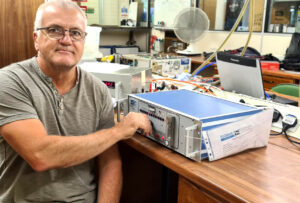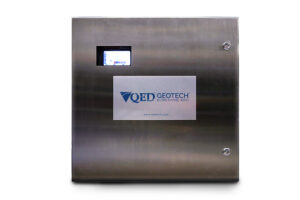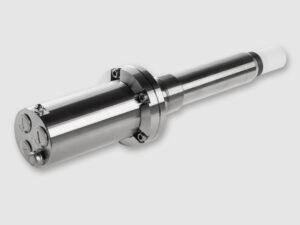One of the largest events of its kind, ADIPEC 2022 (31 October – 3 November, Abu Dhabi, United Arab Emirates)will host more than 150,000 energy professionals and visitors worldwide.
With over 140,000 gross square metres of exhibition space across sixteen halls, there will be plenty to see, especially for any companies seeking reliable, high-quality, proven gas detection and monitoring technologies. From Booth 9413 in Hall 9, Teledyne Gas & Flame Detection will shine the spotlight on several proven products that enhance safety and bring even more capabilities to the oil and gas sector.
Visitors to the booth will also discover how Teledyne will meet the gas detection demands of the giant Hail and Ghasha sour gas project that is currently in development off the UAE coastline.
Among the class-leading products on display from Teledyne GFD will be the GD1 hydrogen sulphide (H2S) laser detector, which features a unique, customisable laser diode that, rather than emitting a conventional straight beam of light, travels as a cone from one point to another. In other words, the beam expands after transmission and is almost a metre in diameter when it reaches the receiver. As a result, the beam can penetrate harsh environments that competitor solutions may find difficult. The GD1 also performs real-time auto-calibration and auto-proof testing, and provides a very high sampling or detection rate i.e., 8000 times/sec. Well over 800 units have been deployed in the field since 2011.
Also in the spotlight will be the GD10P infrared gas detector with full firmware upgrade, enhancing the product’s performance in high demand mode SIL2 approved applications. In comparison with other infrared gas detectors, the new firmware adds further to GD10P’s differentiating factors, which include a solid-state infrared source and a 15-year warranty.
Moreover, despite the shortages experienced in the global semiconductor industry, we have been able to ensure business continuity for most of our products. As such we demonstrate our operational excellence and continue to respond quickly to almost any need. With GD10P, we prove our product leadership, offering to our partners leading-edge products and services. In fact, we have recently sold our 100,000th.
Elsewhere on the booth, ADIPEC visitors will find the GD10PE infrared point gas detector, which is ideal when users need fast, reliable detection of low gas concentrations. With a measuring range of 0-20% LEL, the GD10PE is five times more sensitive than standard point detectors.
Another exciting innovation launching at the show is Spyglass™, a brand-new range of flame detectors offering integrated high-definition CCTV video that facilitates the clear, rapid imaging of fire and people at unprecedented distances. When connected to a DVR/NVR, the rescue team becomes aware of the exact situation before entering the hazardous area. A range of high-capability models is available offering a selection of different detectors. Visitors should head for the booth to find out more.
Teledyne’s product portfolio houses a variety of detection technologies, including fixed, portable and wireless, as well as area monitors. Sometimes a mix of solutions can improve reliability and availability, as evidenced in the company’s proposal for the enormous Hail and Ghasha sour gas development, which is set to go live in 2024.
The main contractor tasked Teledyne GFD to ensure reliable wireless gas detection with 24-7 availability. As a result, the company proposed fixed gas detectors connected via a wireless mesh as a primary means of detecting LEL explosive gases and hydrogen sulphide gases. The solution also includes a second line of defence, utilising a mesh network of Teledyne’s field proven BM25 wireless area monitors. Implementation commenced in June 2021, with the wireless mesh network featuring independent supervision from field-mounted controllers and remote displays.
The BM25 will be on display at the booth, alongside other Teledyne industrial gas and flame detectors – both fixed and portable, including the wireless CXT. Personal gas monitors on view will include the PS200, PS500 and Protégé ZM, while a ‘Solution Wall’ will showcase DG MOS detector with Telecapteur asset management software, but also the high temperature SIL 2 DF flame detector.
Any company seeking the latest detection and monitoring technologies to keep oil and gas operations running safely, efficiently, and profitably, should look no further than the innovative solutions available from Teledyne GFD. ADIPEC visitors are welcome to discuss their specific challenges and requirements for which we will have an experienced and knowledgeable team on the booth.
At Teledyne Gas & Flame Detection, we focus on delivering superior customer value which means operational excellence and product leadership.
For more information, visit www.TeledyneGFD.com or contact gasandflamedetection@teledyne.com

 Instrumentation Monthly Test | Measurement | Control
Instrumentation Monthly Test | Measurement | Control











